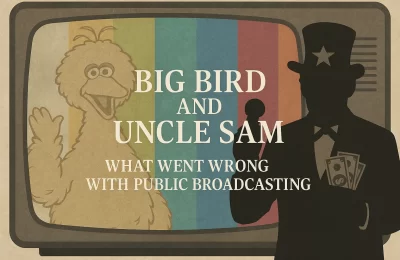Live it out. Share the truth. Walk with courage.
Foundations of a Biblical Worldview – Part 1
Scripture: Colossians 1:16–17
The Lens That Shapes Everything
Have you ever wondered why two people can look at the same crisis, tragedy, or cultural moment—and come away with completely opposite conclusions? It’s not just personality or politics. It’s worldview.
Whether we realize it or not, every one of us sees the world through a particular lens. That lens shapes how we understand God, truth, morality, purpose, justice, and the future. In other words: your worldview isn’t just what you believe—it’s how you live.
A biblical worldview gives us more than a belief system. It gives us a story. A true story. One that begins in Genesis and culminates in Revelation—a story of Creation, Fall, Redemption, and Restoration.
This is the story that answers life’s deepest questions and equips believers to see clearly, stand firmly, and live courageously in a confused world.
All Things Hold Together in Christ
“For by Him all things were created, both in the heavens and on earth… all things have been created through Him and for Him. And He is before all things, and in Him all things hold together.” — Colossians 1:16–17 (LSB)
Colossians 1 is the cornerstone of a biblical worldview. It makes one thing unmistakably clear: Jesus Christ is not part of the story—He is the story.
He created everything. He sustains everything. And everything exists for His glory.
This means a biblical worldview must begin not with our experiences or opinions—but with Christ as Creator, Sustainer, and Lord. In Him, everything makes sense. Without Him, everything falls apart.
That’s why the biblical worldview answers life’s four foundational questions:
- Origin – Where did we come from?
- Meaning – Why are we here?
- Morality – How should we live?
- Destiny – Where are we going?
The answers emerge from the grand story of Scripture—a story that’s both theologically rich and spiritually transformative.
Understanding the Biblical Meta-Narrative
Creation: The World as It Was Meant to Be
Every worldview begins with an origin story. Scripture opens with, “In the beginning, God created the heavens and the earth” (Genesis 1:1). This is no myth. It’s a declaration of divine authority and intentional design.
Humanity isn’t an accident. We are made in God’s image (Genesis 1:26–27)—with dignity, purpose, and responsibility. Our original role was to reflect God’s glory, steward creation, and walk in fellowship with our Creator.
This truth directly confronts naturalism and secularism, which reduce life to atoms and accidents. In the biblical worldview, meaning is derived from design.
The Fall: The World Goes Dark
But something went terribly wrong. The world today doesn’t reflect Eden’s peace—it reflects a deep, universal brokenness. That brokenness is the result of sin—both human and supernatural.
Scripture reveals not one, but three major rebellions:
- Genesis 3 – Adam and Eve are deceived by the serpent, a rebellious divine being (cf. Ezekiel 28:13–15), introducing sin and death (Romans 5:12).
- Genesis 6 – “Sons of God” transgress boundaries, producing the Nephilim and corrupting humanity (Genesis 6:1–4; Heiser, 2015).
- Genesis 11 – Humanity unites in defiance at Babel; God disperses them and delegates the nations to lesser spiritual rulers (Deut. 32:8–9; Psalm 82).
The Fall isn’t just a moral lapse—it’s a cosmic mutiny. The biblical worldview explains the chaos of the world not as a glitch in human progress, but as the tragic result of rebellion—both earthly and divine.
This stands in stark contrast to worldviews like Marxism or humanism, which misdiagnose the problem as purely social or economic.
Redemption: The Hero Enters the Story
From the beginning, God promised a Redeemer. Genesis 3:15 is the first whisper of the gospel—the seed of the woman who would crush the serpent’s head.
Jesus Christ, fully God and fully man, entered our broken world to defeat sin, disarm spiritual powers (Colossians 2:15), and reconcile us to God. Through His death and resurrection, He fulfills the promises of redemption and makes a way back to life.
Redemption answers the question of destiny: Where is history headed? Not toward meaningless cycles or reincarnation, but toward the return of the King and the restoration of all things.
Restoration: The World Made New
The story doesn’t end with salvation—it ends with restoration.
Revelation 21–22 paints a picture of a new heaven and new earth, where God dwells with His people, and every tear is wiped away. The curse is reversed. Justice is done. Creation is healed.
Until that day, we live as ambassadors of that coming kingdom (2 Corinthians 5:20), reflecting the justice, mercy, and holiness of the King. A biblical worldview fuels both present faithfulness and future hope.
Why This Changes Everything
Theological clarity leads to spiritual maturity.
That’s why worldview isn’t optional—it’s essential to discipleship. Romans 12:2 calls us to “be transformed by the renewing of your mind.” The biblical worldview renews our minds by aligning us with God’s truth in every area of life—education, work, sexuality, politics, suffering, science, and culture.
To disciple someone is to train them to think biblically about all of life—not just church on Sunday, but work on Monday.
Worldview is the framework where doctrine becomes direction and truth becomes transformation.
Calibrate Your Lens to Christ
What story are you living in?
If your lens is fogged by culture, fear, or false teaching, it’s time to reset. Colossians 1:16–17 reminds us that everything holds together in Christ. That means your worldview should too.
Choose the story that’s true. The story that leads to life. The story that begins and ends with Jesus.
And don’t just believe it—live it.
Next → In the Beginning: Why Creation Matters Today
View All: Foundations of a Biblical Worldview Series
A Biblical Worldview Affirms That:
- Christ is at the center of creation, history, and destiny (Colossians 1:16–17).
- The true story of the world is Creation → Fall → Redemption → Restoration.
- Worldview is discipleship—it shapes how we think, live, and hope.








